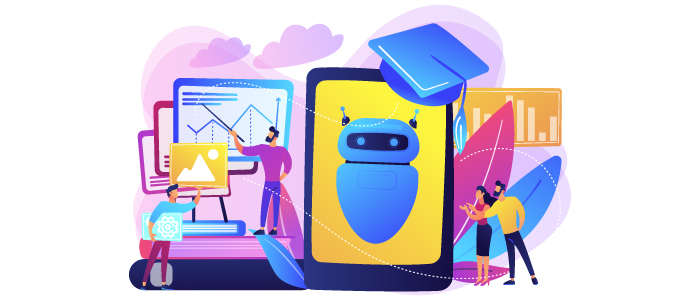Introduction
It’s crucial to keep up with trends if you want to successfully connect with and connect the market you are targeting in the ever changing world of digital marketing. One of the most transformative developments in recent years has been integrating artificial intelligence (AI) and machine learning (ML) into audience targeting strategies. This blog article will go through how AI and ML revolutionize audience targeting, enabling businesses to deliver personalized and highly relevant content to their audiences like never before.
Understanding AI and Machine Learning
Before diving into their role in audience targeting, let’s briefly clarify what AI and ML mean:
Artificial Intelligence (AI): The development of computer systems that is capable of performing things that normally need human intelligence is referred to as artificial intelligence (AI). This includes functions like problem-solving, speech recognition, and decision-making.
Machine Learning (ML): Machine learning is an aspect that focuses on modelling in artificial intelligence and algorithms that let computers learn from data and predict or decide based on that data. It is the engine of many AI applications.
The Role of AI and ML in Audience Targeting
Advanced Data Analysis: AI and ML can process vast amounts of data at impossible speeds for humans. This capability enables marketers to analyze user behavior, preferences, and interactions with unprecedented depth and accuracy. These insights form the foundation of effective audience targeting.
Predictive Analytics: Using historical data, ML algorithms can predict user behavior and preferences. This allows marketers to anticipate what content or products their audience will likely engage with or purchase, enabling highly targeted campaigns.
Dynamic Content Personalization: AI-powered content management systems can dynamically personalize website content, email campaigns, and product recommendations based on real-time interactions and behaviour of users. This level of personalization enhances user engagement and conversion rates.
Automated Audience Segmentation: ML algorithms may automatically divide your audience into several categories based on the characteristics and behaviors that they have in common. This helps marketers tailor their messaging to different segments more effectively.
Improved Ad Targeting: AI-driven ad platforms like Google Ads use machine learning to optimize ad targeting. They analyze user data to determine the most relevant audiences for a given ad, improving click-through rates and conversion rates while minimizing ad spend wastage.
Natural Language Processing (NLP): Natural Language Processing, a subfield of AI, is used to analyze and understand user-generated content, such as social media posts and reviews. This can provide valuable insights into audience sentiment and preferences.
Chatbots and Customer Support: AI-powered chatbots can provide personalized customer support, answering user queries and providing recommendations based on user interactions. Customer happiness and the user experience are both enhanced by this.
Fraud Detection: ML algorithms detect and prevent fraudulent activities like click fraud in digital advertising. This ensures that marketing budgets are spent efficiently.
Challenges and Considerations
While AI and ML offer substantial benefits in audience targeting, it’s important to address some challenges:
Data Privacy: With great data comes great responsibility. Businesses must handle user data ethically and comply with privacy regulations like GDPR and CCPA.
Algorithm Transparency: Some ML algorithms’ “black-box” nature can make it tough to comprehend the rationale behind specific judgements. Efforts are being made to increase algorithm transparency.
Training Data Quality: ML models’ accuracy depends on the training data quality. Noisy or biased data can lead to inaccurate predictions and targeting.
Conclusion
AI and machine learning are transforming audience targeting by providing marketers with powerful tools to understand, segment, and engage their audiences more effectively. By harnessing the capabilities of AI and ML, businesses can create personalized and highly relevant marketing campaigns that reach their target audience and provide a superior user experience, ultimately leading to improved conversion rates and long-term customer loyalty. As AI and ML advance, their audience-targeting role will only become central to successful digital marketing strategies.
Reach out to us at info@paypercampaign.com





